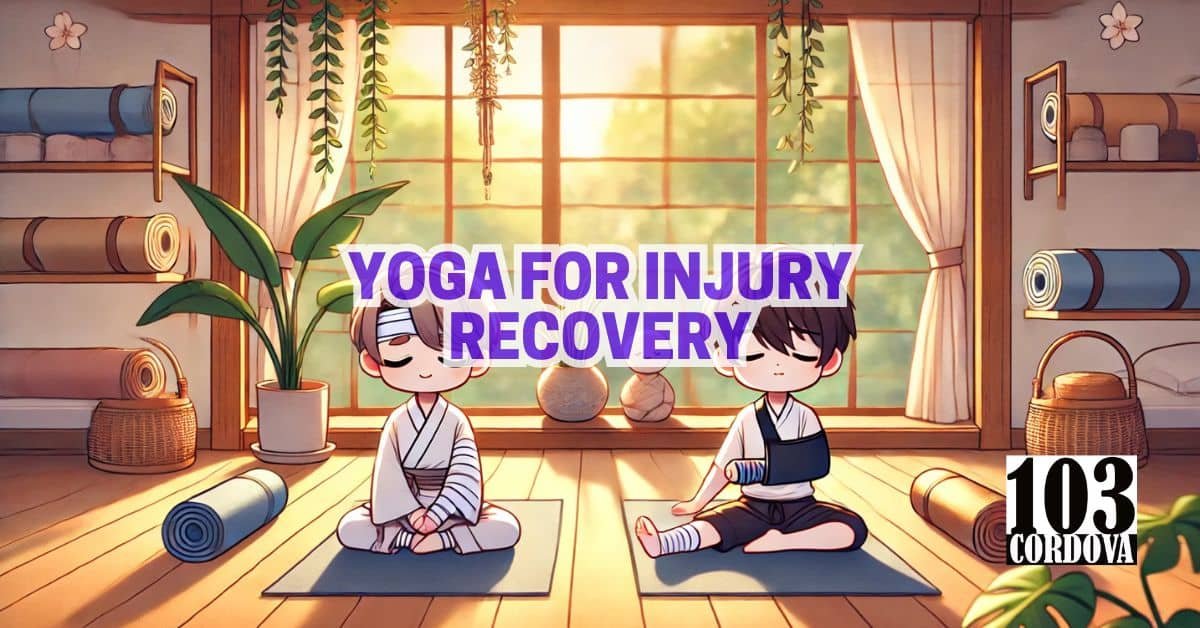Yoga for injury recovery is a powerful way to support both physical and mental healing.
It blends gentle movement, focused breathing, and mindfulness, which are essential components of rehabilitation.
Unlike exercises that can be too intense for a healing body, yoga provides a safe and adaptable method.
This approach helps you rebuild strength, flexibility, and awareness without causing strain.
It also promotes emotional well-being, which can be crucial during a challenging recovery period.
1. How Yoga Enhances Blood Circulation for Faster Healing
Blood circulation is key to recovery, and yoga supports this process through dynamic and static poses.
Gentle movements increase blood flow to injured areas, helping deliver nutrients and oxygen that the body needs to repair itself.
Yoga also stimulates the lymphatic system, which helps remove toxins and waste products from the body.
Certain poses, like forward bends and twists, are particularly effective in boosting circulation.
This overall improvement in blood flow can reduce swelling and speed up the healing process.
🧘 Key Factors to Consider When Purchasing a Yoga Mat and Bag Set
2. Improving Flexibility and Range of Motion Through Yoga
Injury often leads to stiffness, making flexibility a crucial goal during recovery.
Yoga helps safely stretch muscles and connective tissues, allowing for gradual improvements in mobility.
Poses like the cat-cow stretch or seated forward fold focus on elongating tight areas without overstretching.
Over time, consistent yoga practice helps restore natural movement, making daily activities easier.
Regaining flexibility also lowers the risk of future injuries by keeping the body balanced and adaptable.
🧘 The Benefits of Switching to an Eco-Friendly Yoga Mat for Your Practice
3. Strengthening Muscles and Joints with Yoga for Injury Recovery
Rebuilding strength after an injury requires a gentle yet effective approach, and yoga offers just that.
Weight-bearing poses like downward dog or warrior strengthen muscles while being kind to joints.
These movements help stabilize injured areas and improve overall body mechanics.
Yoga also encourages balanced muscle engagement, ensuring no single group bears excessive strain.
This holistic strengthening supports long-term resilience and prevents further damage.
🧘 How to Select the Best Hot Yoga Gear for Your Sessions
4. How Yoga Reduces Pain and Inflammation During Recovery
Pain and inflammation can slow healing, but yoga addresses both through its calming practices.
Gentle poses stretch and release tension in affected areas, easing discomfort.
Controlled breathing activates the parasympathetic nervous system, reducing stress and pain perception.
Yoga’s focus on mindfulness can also shift attention away from pain, offering a natural method of relief.
Additionally, certain poses can lower inflammation by improving circulation and relaxation.
🧘 How to Choose the Ideal Yoga Bare Mats for Your Practice
5. The Power of Yoga in Boosting Your Mind-Body Connection
Yoga teaches you to listen to your body’s signals, a skill that is invaluable during recovery.
By focusing on breath and posture, you become more aware of areas that need care and attention.
This awareness allows you to adjust movements to avoid aggravating injuries.
In time, yoga helps strengthen your trust in your body’s healing abilities.
The mind-body connection cultivated in yoga fosters confidence and patience throughout the recovery process.
🧘 Why Travel Yoga Blocks Are a Must-Have for Practicing on the Go
6. How Yoga Helps Release Tension and Stress to Aid Healing
Stress can slow recovery by increasing tension and inflammation in the body.
Yoga combats this by combining gentle movement with relaxation techniques like deep breathing.
This releases physical tightness in areas such as the neck, shoulders, and back, which often hold stress.
Lower stress levels allow the body’s repair systems to work more efficiently.
Practicing yoga regularly helps you approach recovery with a calm and focused mindset.
🧘 Yoga Cleansing Techniques: Exploring Ancient Practices for Modern Wellness
7. Improving Posture and Alignment to Prevent Future Injuries
Poor posture often contributes to injuries by placing strain on muscles and joints.
Yoga emphasizes proper alignment in every pose, training you to move with better balance.
With time, improved posture supports healing and reduces unnecessary stress on vulnerable areas.
Core-strengthening poses, like plank or bridge, enhance stability and alignment.
These benefits extend beyond recovery, helping you maintain a healthy and injury-resistant body.
🧘 Why a Yoga Mat with Markings Is Ideal for Beginners
8. Yoga’s Role in Promoting Mental Clarity and Focus During Recovery
Injury recovery can bring mental challenges, such as frustration or anxiety.
Yoga’s mindfulness techniques help clear your mind and improve focus.
Practices like meditation and controlled breathing keep your thoughts grounded, reducing stress.
A calm and focused mind can make it easier to stick to recovery routines and track progress.
This mental clarity also enhances your overall sense of well-being during a demanding time.
🧘 Why a Leopard Print Yoga Mat Combines Style and Function Perfectly
9. Why Consistent Yoga Practice Supports Safe Recovery
Consistency is essential for making steady progress during injury recovery.
Regular yoga sessions build strength, flexibility, and awareness without risking overexertion.
A gradual approach ensures your body can heal while adapting to increased activity levels.
Practicing yoga consistently also creates a structured routine, which can boost motivation and commitment.
Eventually, these steady efforts contribute to a stronger and healthier body.
🧘 Expand Your Knowledge of Yoga
10. Customizing Your Yoga Practice for Specific Injuries
Every injury requires unique care, and yoga can be tailored to suit individual needs.
Consulting with an experienced instructor ensures you choose poses that are safe and effective.
Modifications, such as using props or adjusting angles, make poses accessible during recovery.
Targeted sequences can address specific areas, like the lower back or shoulders, without causing strain.
Personalizing your practice maximizes the benefits while minimizing risks.
🧘 Yoga Classes in Marikina City
💡 Conclusion
Yoga for injury recovery is a versatile tool that addresses both physical and mental challenges.
Its adaptable practices improve circulation, strength, and flexibility while promoting relaxation and focus.
By choosing yoga, you support your body’s natural ability to heal in a safe and effective way.
The mental benefits, like reduced stress and improved clarity, further enhance the recovery process.
Incorporating yoga into your routine helps build a healthier and more resilient foundation for the future.
🧘 Our Services
Transform your mind and body with our yoga classes for all ages, conveniently located at 103 Cordova Tower, Marquinton Residences, Cirma Street, Sto. Niño, Marikina City.
Our classes are designed to suit beginners and seasoned practitioners alike, offering a nurturing space to improve flexibility, reduce stress, and boost overall well-being.
Whether you’re a child, adult, or senior, our experienced instructors tailor sessions to meet your unique needs.
Get in touch with us today by calling 09176225780, reaching out via Facebook, or using our easy-to-access contact form.
Start your journey to a healthier and happier you—your mat is waiting!

